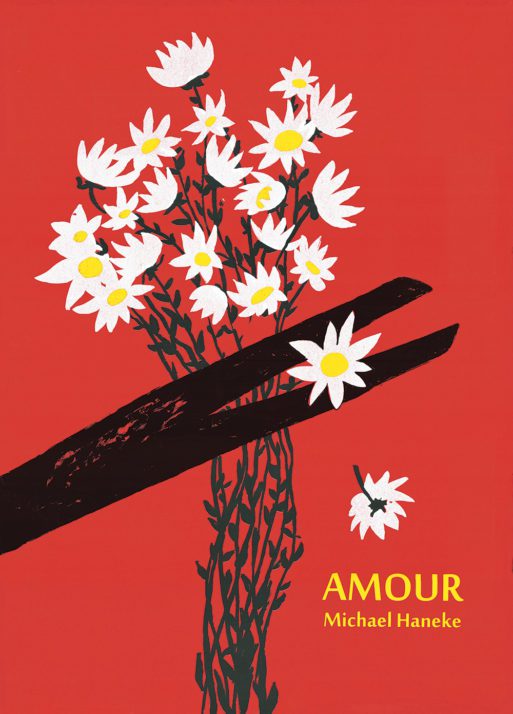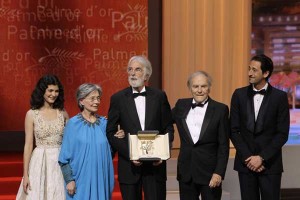 Austrian director Michael Haneke’s Oscar winning film is not easy, nor pleasurable to watch. Because one can’t just watch Amour—they have to experience it, and become invested in its characters to a degree that is rare in the movies today. The film requires a true exercise of strength from its viewer, because it does not seek to entertain them with an escape from reality that is so often sought in cinema.
Austrian director Michael Haneke’s Oscar winning film is not easy, nor pleasurable to watch. Because one can’t just watch Amour—they have to experience it, and become invested in its characters to a degree that is rare in the movies today. The film requires a true exercise of strength from its viewer, because it does not seek to entertain them with an escape from reality that is so often sought in cinema.
Instead, Haneke dares to bring us closer to reality, and to one shared human reality in particular: how we choose to live, and love, as we are dying.
A French language film, Amour is set in Paris and follows the quiet life of the retired couple Anne and Georges, a pair of talented musicians in their late eighties (played with absolute precision by actors Emmanuelle Riva and Jean-Louis Trintignant, respectively). Though somewhat estranged from their daughter Eva (Isabelle Huppert), we have the impression that the two live happily and fully as they mosey to-and-from the symphony, or enjoy peaceful mornings from their Parisian balcony with a pot of tea.

The cast of “Amour” wins the prestigious Palme d’or at the 2012 Cannes Film Festival. Image courtesy of WO-TV.
And yet, it is during one of these quotidian mornings that Anne suffers the first of two silent strokes in the film. It is also the moment in which the viewer begins to understand that they will be watching a movie with a “real-time” narrative arch. In other words, when we see Anne’s stroke, we do not see it in a flash, but experience its entire duration. We see the breakfast-nibbling beforehand, Anne’s sudden silence and George’s growing realization of it, his instinctive responses—is she playing a joke? Who should he call?—and finally, their mutual realization of her condition afterwards. The scene is long and painstaking to watch, like most other scenes of the film, but is consequentially cathartic for the viewer. We feel as if we, too, have been holding George and Anne’s hands in such moments. And we see how George loves, and cares for Anne in every possible way through real-time scenes that only magnify his tenderness.
The movie’s action continues to take place in the couple’s apartment-turned-hospice, and we see Anne’s character react to the growing difficulties of her condition: “Don’t ever let me go back to a hospital,” she begs Georges, who reluctantly promises to respect her wish. He also respects Anne’s refusal to be doted upon and pitied as much as he reasonably can.
As much as we want to applaud Anne’s fortitude, we also recognize that it comes from a complicated blend of pride, depression, and exhaustion—but also acceptance. “It’s beautiful, a long, well-lived life,” she later says while studying old-photo albums, “but I want to die.” Georges does not feel angry or betrayed, but takes her hand. Her words pain him, but he understands.
Clocking in at over two hours, Amour is not a movie for the faint of heart. Nevertheless, it is a film worth seeing for the attention it has so delicately given to a difficult subject.
Watch the trailer below:

 ”Amour” by Michael Haneke
”Amour” by Michael Haneke


 Forest Bathing Eases Grief by Soaking in Nature
Forest Bathing Eases Grief by Soaking in Nature
 The Spiritual Symbolism of Cardinals
The Spiritual Symbolism of Cardinals
 Meaning-Focused Grief Therapy: Imaginal Dialogues with the Deceased
Meaning-Focused Grief Therapy: Imaginal Dialogues with the Deceased














